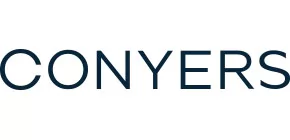- within Finance and Banking topic(s)
- with Senior Company Executives, HR and Finance and Tax Executives
- with readers working within the Media & Information and Securities & Investment industries
The Hong Kong Stock Exchange (HKEX) is back challenging for the top of the global listing league tables with secondary listings helping drive the recent surge of activity. In the past, secondary listings on the HKEX have featured some of the world's most prominent names. For example, after Alibaba Group's blockbuster IPO in New York in 2014, it returned to Hong Kong for a secondary listing in 2019, raising approximately US$12.9 billion. Other US listed companies such as JD.com and NetEase following suit. More recently, companies with primary listings in mainland China have been at the forefront of the trend. In 2024, Midea Group completed Hong Kong's largest offering of the year with a US$3.9 billion secondary listing on HKEX, followed by Contemporary Amperex Technology Co., Limited's US$4.6 billion listing in May 2025—the world's largest so far this year.
This article gives a brief overview of secondary listings on the HKEX and the drivers behind the recent resurgence.
Secondary Listings Explained
A secondary listing occurs when a publicly traded company, already listed on one stock exchange, opts to list its shares on another exchange usually to broaden its investor base and gain access to new sources of capital. For multinational companies, especially those with an Asian footprint or aspirations, the HKEX has become a gateway to global visibility and increased liquidity. Unlike primary listings, which typically demand stringent regulatory procedures to be allowed to complete, secondary listings often allow companies to leverage their existing disclosures and governance frameworks, streamlining the process.
Drivers Behind the Trend
Access to Asia's Capital and Investors:
Hong Kong's status as an international finance centre, strategically positioned at the crossroads of East and West, is foundational to the appeal of secondary listings. As China's economy continues to expand and Asian wealth grows, companies see immense value in tapping into Hong Kong's sophisticated pool of institutional and retail investors.
Geopolitical Shifts and Regulatory Dynamics:
Ongoing geopolitical tensions, most notably between China and the United States have fuelled uncertainty about Chinese companies' long-term access to US capital markets. In response, many US listed Chinese and overseas companies with significant Chinese interests have sought secondary listings in Hong Kong as a strategic hedge. The HKEX's "homecoming" trend is seen as a way to mitigate potential risks for companies listed only on a US exchange and maintain investor confidence.
Market Liquidity and Valuation Premiums:
Secondary listings in Hong Kong offer issuers the prospect of improved share liquidity and potentially higher valuations. By listing in a market that understands their business models, especially for China based tech and consumer companies, help firms attract favourable coverage from analysts and more engaged investors. The Stock Connect program, which links Hong Kong with mainland Chinese investors, has further amplified these benefits.
Regulatory Reforms and Innovative Listing Regimes:
In recent years, the HKEX has undertaken major reforms to modernise its listing regime. Notably, it has introduced chapters accommodating companies with different voting rights (weighted voting rights), biotech firms without revenue, and special purpose acquisition companies (SPACs). Regulatory shifts in mainland China allow Chinese companies to list offshore and new measures to fast-track approval from Chinese and Hong Kong regulators for eligible mainland tech companies to list on the HKEX have also unleased new demand from companies already listed in the mainland.
The Road Ahead
Looking forward, the HKEX appears to be actively working to maintain and extend its appeal for secondary listings. Ongoing regulatory reforms, increased engagement with international issuers and leveraging its connections with China's vast capital base and embracing emerging sectors such as green finance, fintech, and biotech are helping HKEX adapt to the evolving needs of global businesses. Given these positive reforms and recent favourable policy tailwinds from mainland China, the outlook for Hong Kong as a hub for secondary listings appears robust.
The need to navigate complex and evolving regulatory frameworks in China, the US and offshore jurisdictions requires careful planning and coordination between advisors. As Cayman Islands incorporated companies (for example Alibaba, JD.com and NetEase) and Bermuda incorporated companies are often used by Chinese groups as listing vehicles, Cayman Islands or Bermuda advice is often essential to ensure a successful "homecoming" to the HKEX for companies that are listed on a US exchange. For companies listed in mainland China who are utilising Cayman Islands, British Virgin Islands or Bermuda companies within their group structure, advice in those jurisdictions will often be required to complete a successful secondary listing on the HKEX.
The content of this article is intended to provide a general guide to the subject matter. Specialist advice should be sought about your specific circumstances.



